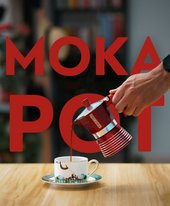
Peruvian Coffee: A Journey from the Andes to Your Cup
Share
Buy Peruvian Coffee, from Octave
Peruvian coffee stands out in the specialty coffee world for its unique flavors, sustainable cultivation practices, and rich history. Whether you're a seasoned coffee enthusiast or a casual drinker, exploring Peruvian coffee offers a delightful experience.
Origins and History
 photo courtesy of https://sca.coffee/sca-news/a-brief-history-of-perus-specialty-coffee-production-and-consumption-may-2024
photo courtesy of https://sca.coffee/sca-news/a-brief-history-of-perus-specialty-coffee-production-and-consumption-may-2024Introduction of Coffee to Peru
Coffee was introduced to Peru in the mid-1700s, likely through neighboring Ecuador. Initially, the country consumed its coffee locally, with exports beginning in the late 1800s. This shift occurred when coffee leaf rust devastated crops in Indonesia, prompting Europe to seek alternative sources. Peru's high-altitude regions, such as Cajamarca, Amazonas, and San Martín, provided ideal conditions for cultivating high-quality Arabica beans. These areas, located on the eastern slopes of the Andes, offered rich soil and a favorable climate, contributing to the unique flavor profiles of Peruvian coffee.
 photo courtesy of https://sca.coffee/sca-news/peruvian-coffees-cultivation-and-sustainable-development-june-2024
photo courtesy of https://sca.coffee/sca-news/peruvian-coffees-cultivation-and-sustainable-development-june-2024Coffee Cultivation Regions
Peru's coffee cultivation spans several regions, each contributing distinct characteristics to the beans produced:
Cajamarca: Known for producing clean, sweet, and balanced coffees with notes of chocolate, citrus, and nuts. Escondido Specialty Coffee
San Martín: A rising star, especially for organic-certified lots, offering vibrant acidity and floral notes. Escondido Specialty Coffee
Amazonas: Characterized by its rich biodiversity, contributing to complex flavor profiles in the coffee beans.
Junín: Offers a harmonious balance of flavors, with medium acidity and a smooth body.
These regions, situated at elevations ranging from 900 to 2,500 meters above sea level, provide the perfect conditions for high-quality coffee production. altocajamarcaStoneX Specialty Coffee
 photo courtesy of https://khipucoffee.co.uk/blogs/travel/the-10-coffee-regions-of-peru
photo courtesy of https://khipucoffee.co.uk/blogs/travel/the-10-coffee-regions-of-peruSustainable Practices and Global Recognition
Peru is recognized as one of the world's top coffee producers, ranking among the top 10 globally. The country's coffee farms are predominantly small-scale operations, often under 1-3 hectares, with a strong emphasis on organic and fair-trade practices. This commitment to sustainability ensures that farmers receive fair wages and that the environment is protected for future generations. Peruvian coffee is almost exclusively Arabica, with varieties like Typica, Caturra, and Catimor being prevalent. These beans are known for their medium to high acidity, floral and fruity notes, with a chocolatey finish. Specialty Coffee
Flavor Profile
Peruvian coffee is renowned for its smooth, mild flavor and gentle acidity. Grown in the high-altitude regions of the Andes Mountains, these beans benefit from ideal growing conditions, including rich soil and a perfect balance of sun and rain. The result is a coffee that's both complex and approachable, with a medium body and notes that range from nutty and chocolatey to bright and fruity .
Sustainable and Ethical Practices
A significant portion of Peruvian coffee is grown using organic and Fair Trade-certified methods. This commitment to sustainability ensures that farmers receive fair wages and that the environment is protected for future generations. The country's coffee areas stretch along the eastern slopes of the Andes, covering 17 of 24 regions, providing the perfect conditions for high-quality coffee .
Brewing Peruvian Coffee
To fully appreciate the nuances of Peruvian coffee, it's essential to brew it correctly. Here are some tips:
Grind Size: Use a medium grind for drip brewing methods and a fine grind for espresso.
Water Temperature: Aim for a brewing temperature between 195°F and 205°F (90°C to 96°C).
Brew Time: Adjust your brewing time based on the method you're using, typically between 4 to 6 minutes for drip coffee.
Coffee-to-Water Ratio: A standard ratio is 1:15, meaning 1 gram of coffee for every 15 grams of water.
Where to Find Peruvian Coffee
Many specialty coffee roasters offer Peruvian beans, often highlighting specific regions or flavor profiles. These can be found online or at local coffee shops that focus on single-origin coffees.
Conclusion
Peruvian coffee offers a unique and flavorful experience that reflects the country's rich agricultural heritage and commitment to sustainable practices. Whether you're enjoying a cup at home or exploring new blends, Peruvian coffee is sure to delight your palate.
Note: For a curated selection of specialty coffees, visit Octave Coffee.
Related Posts
-

Shake It Up: Octave Coffee's Shaken Espresso Recipe
Hey coffee folks—want to mix things up a bit? Check out our Octave Shaken Espresso Recipe. It’s got all the bold fl...
-

Embrace Italian Indulgence: A Guide to Perfect Affogato Shots
Index: Introduction Ingredients Instructions Brew Espresso the Italian Way Prepare Gelato with Italian Flair Cr...
-

Octave Coffee's Cinnamon Mocha Recipe: An Effortless Harmony of Flavors
As the Christmas season unfolds, treat yourself to the warmth of Octave Coffee with a simple yet delicious Cinnamon ...
-

Cortadito Recipe: A Brief History and Simple Guide
Originating in Cuban coffee culture, "cortadito" is a Spanish term that translates to "cut" in English. In the co...
-

Recipe Series: "Poor Man's Cortadito"
A Masterclass in No-Nonsense Coffee from Your Own Filter Basket So, you fancy yourself a coffee connoisseur but can't...
-

Recipe Series: Cozy Autumn Bliss - Homemade Pumpkin Spice Latte
Here in the American northeast, as the leaves start to change and the air turns crisp, there's no better way to embra...
-

How to Make Coffee Without a Coffee Maker: Simple Solutions from a Coffee Roaster
Table of Contents The Classic: Boiling Water & Coffee Grounds The Cowboy Method: Coffee Over an Open Fire Im...
-

The Ultimate Guide to Moka Pot Brewing: Mastering Grind Size, Roast Levels, and Brewing Steps
Moka Pot Brewing Guide Introduction Section 1: Unveiling the Moka Pot Magic 1.1 The Heart of the Moka Pot 1.2 The B...
-

V60 Pour-Over Coffee: A Simple, But Complete Guide
The V60 pour-over method is distinctive because it not only brings out nuanced flavors in coffee roasts, but also off...
-

How to Make Strong Coffee: A Guide By Octave Coffee
Brewing a cup of resilience becomes an art form with Octave Coffee's comprehensive guide on how to make strong coffe...
-

The Art of Vietnamese Coffee: Brewing with a Phin
I was just talking to a friend of mine from church this week and he was introducing me to the idea of Vietnamese Milk...













